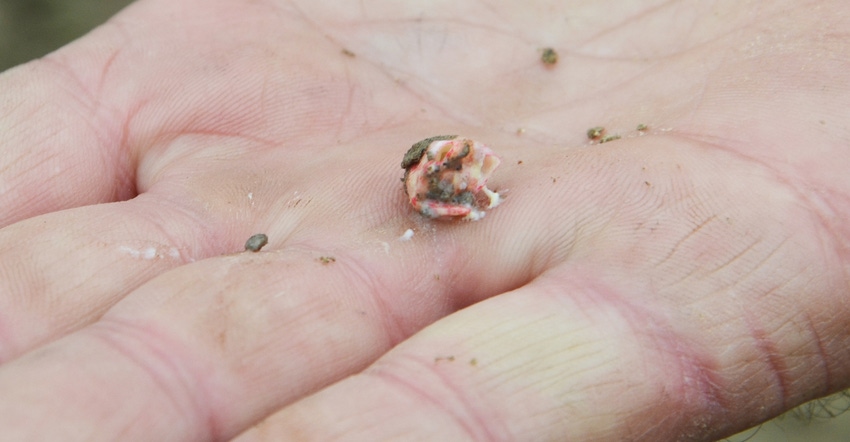
Dave Nanda made a case over the past year that climate change may indeed be real. Those who believe the climate in the Midwest is changing predict wetter springs — particularly wetter weather persisting into May. Already, May has overtaken July as the wettest month of the year in Indiana.
Nanda, director of genetics for Seed Genetics-Direct, Jeffersonville, Ohio, makes and reports observations on the Corn Watch ’19 field in the eastern Corn Belt. As of press time, the field wasn’t planted yet, although corn has been planted in some scattered areas where either rains were more inconsistent in coverage or soils are sandier, or both. One risk for corn in the ground in early May is possible seedling disease.
The only saving grace for fields planted after mid-May, or yet to be planted, is that as soil temperatures warm, seedling diseases lose the edge they enjoy when soils are cooler and wetter.
“We still need to watch out for several seedling diseases, no matter when we plant this spring,” Nanda says.
Corn Watch ’19 is sponsored by Seed-Genetics Direct.
Specific diseases
Here is a closer look at potential seedling diseases that could interfere with germination and successful emergence:
Blights can still cause problems and affect plant stands, Nanda says. Cool and wet conditions are ideal for fungal seedling blights. Corn that was planted earlier in some areas or in no-till ground is more susceptible to these diseases. Recent cool and wet periods were ideal for the disease organisms that cause seedling blights.
The pathogens that infect corn seedlings are often species of pythium, fusarium and rhizoctonia. These fungi overwinter in the soil or plant debris. They can infect a substantial portion of the developing root system, including the mesocotyl, which attaches the primary roots of the seed to the developing seedling, or the seminal roots.
Roots appear brown and become soft, rotted and water soaked. The outer tissue of the infected roots may peel off. Yellowing and stunting of the plants may occur.
Sprouted seeds of infected plants start rotting and become mushy. Seedlings turn a brownish color. Survival of the seedlings depends on healthy germinating seeds, which should remain firm. The mesocotyl on healthy plants should be white.
Gibberella, diplodia, penicillium and other fungi can also cause seedling blights and similar symptoms. The 2019 Purdue University Corn and Soybean Field Guide notes that conditions which stress young plants, including soil compaction and crusting, can add to seedling blight issues.
The best prevention occurs before you plant. Select and plant high-quality seed treated with fungicides, and plant when soil temperatures are above 50 degrees F, no matter what the calendar says. Once you diagnose infected plants in the field, there is no recourse unless stand loss is so great that replanting is necessary.
Stewart’s bacterial wilt can also affect some seedlings, Nanda says. It’s caused by the bacteria Erwinia stewartia, which is injected into the plants when flea beetles feed on and leave streaks on leaves. If plants survive, this pathogen can cause bacterial leaf blight. If you see a lot of tiny black flea beetles at the seedling stage, you may control them by spraying an insecticide. Fungicides don’t control bacterial diseases. It tends to be more of a problem with specialty corn, such as seed corn, but if flea beetle populations reach threshold levels even in field corn, treatment may be necessary.
About the Author(s)
You May Also Like




